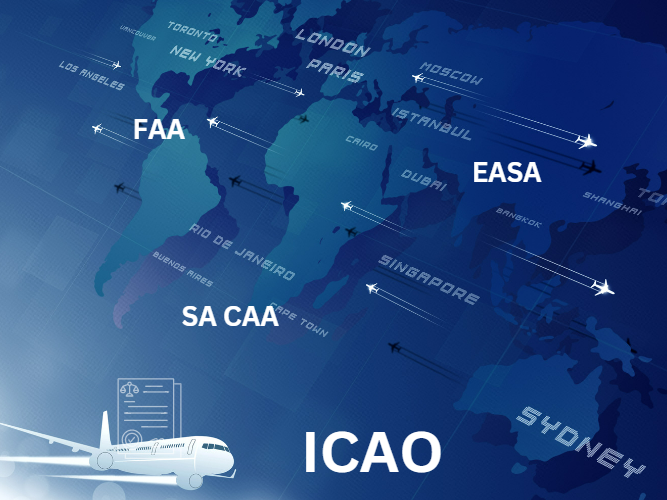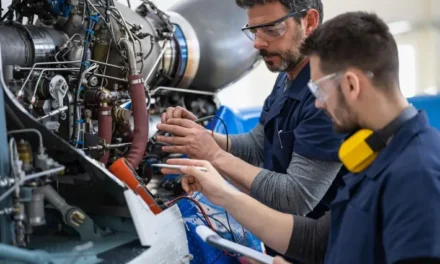Regulatory bodies like the Federal Aviation Administration (FAA) in the United States and the European Union Aviation Safety Agency (EASA) in Europe are responsible for overseeing civil aviation safety and compliance. Their roles encompass establishing regulations, certifying aircraft and personnel, monitoring compliance, and investigating incidents to ensure the safety, efficiency, and environmental sustainability of civil aviation. Here’s how they manage these responsibilities:
1. Establishing Regulations and Standards
FAA (USA)
- Regulatory Framework:
- The FAA issues regulations under Title 14 of the Code of Federal Regulations (CFR), covering various aspects of aviation such as operations, maintenance, and airworthiness.
- Examples:
- Part 25: Certification of large airplanes.
- Part 121: Rules for air carriers and operators.
- Advisory Circulars:
- Provide guidance for compliance with regulations and best practices.
EASA (Europe)
- Regulatory Framework:
- EASA regulations apply across EU member states and other cooperating countries.
- Examples:
- Part-21: Certification of aircraft and related products.
- Part-FCL: Licensing of flight crew.
- Acceptable Means of Compliance (AMC) and Guidance Material (GM):
- Offer practical methods for meeting regulatory requirements.
2. Aircraft Certification
Type Certification
- FAA:
- Certifies aircraft designs, engines, and propellers to ensure they meet safety standards.
- Issues a Type Certificate upon compliance.
- EASA:
- Conducts similar evaluations under Part-21 and issues a Type Certificate or Supplemental Type Certificate (STC) for design changes.
Production and Airworthiness Certification
- FAA:
- Ensures production quality through Production Certificates and issues an Airworthiness Certificate before an aircraft can operate.
- EASA:
- Oversees production organizations through Production Organization Approvals (POA) and grants Certificates of Airworthiness (CoA).
3. Licensing and Training
Pilot and Crew Licensing
- FAA:
- Issues pilot licenses such as Private Pilot License (PPL), Commercial Pilot License (CPL), and Airline Transport Pilot License (ATPL) under Part 61 and Part 141.
- Enforces medical certification and recurrent training requirements.
- EASA:
- Adheres to uniform licensing standards across member states under Part-FCL.
- Includes endorsements for specific aircraft types and specialized operations.
Maintenance Personnel
- FAA:
- Certifies aircraft mechanics and repair stations under Part 65 and Part 145.
- EASA:
- Certifies engineers through the Part-66 Aircraft Maintenance License and oversees Part-145 maintenance organizations.
4. Operational Oversight
Airline Operations
- FAA:
- Certifies airlines and operators under Part 121 (commercial operations) and Part 135 (charter and on-demand operations).
- EASA:
- Regulates commercial operations under Part-CAT (Commercial Air Transport) and oversees specialized operations under Part-SPO.
Airport Standards
- Both agencies establish safety and infrastructure standards for airports.
- Examples:
- FAA’s Part 139 certification for airports serving air carriers.
- EASA’s requirements for aerodromes under EU Regulation 139/2014.
5. Air Traffic Management (ATM)
- FAA:
- Oversees air traffic control (ATC) operations through the National Airspace System (NAS).
- Develops and implements technologies like NextGen for modernization.
- EASA:
- Works with Eurocontrol to harmonize ATC operations across Europe.
- Focuses on initiatives like the Single European Sky (SES) to enhance efficiency.
6. Monitoring Compliance
Inspections and Audits
- Both agencies perform regular inspections and audits of:
- Airlines.
- Maintenance facilities.
- Training organizations.
- Airports.
Enforcement Actions
- Penalties, fines, or revocation of certificates/licenses for non-compliance.
- Both FAA and EASA work with national aviation authorities (NAAs) to enforce regulations locally.
7. Incident Investigation
- FAA:
- Collaborates with the National Transportation Safety Board (NTSB) in investigating accidents and incidents.
- EASA:
- Works with national safety investigation authorities (e.g., BEA in France, AAIB in the UK) to determine causes and recommend improvements.
8. Promoting Innovation and Sustainability
Integration of New Technologies
- FAA:
- Oversees the integration of unmanned aerial systems (UAS), urban air mobility (UAM), and advanced avionics.
- EASA:
- Focuses on electric and hybrid propulsion systems and certifying new categories like VTOL aircraft.
Environmental Impact
- Both agencies develop noise and emissions standards to align with ICAO (International Civil Aviation Organization) recommendations.
- Examples:
- FAA’s Continuous Lower Energy, Emissions, and Noise (CLEEN) program.
- EASA’s focus on Sustainable Aviation Fuels (SAFs) and carbon-neutral growth.
9. International Collaboration
Harmonization of Standards
- Both agencies work with ICAO to develop globally consistent aviation standards.
- Bilateral agreements ensure mutual recognition of certifications (e.g., FAA-EASA Bilateral Aviation Safety Agreement).
Capacity Building
- Provide technical assistance and training to emerging aviation markets to enhance global safety standards.
10. Public Engagement
- Advisory Committees:
- Both agencies consult with industry stakeholders, airlines, and the public to shape regulations.
- Safety Campaigns:
- Promote awareness of aviation safety best practices.
The FAA and EASA play pivotal roles in ensuring the safety, efficiency, and sustainability of civil aviation. Through comprehensive regulations, certification processes, compliance monitoring, and international collaboration, they uphold the highest safety standards in the global aviation industry. As the aviation sector evolves, these agencies are at the forefront of addressing emerging challenges, such as advanced air mobility and environmental sustainability, while maintaining robust oversight.













